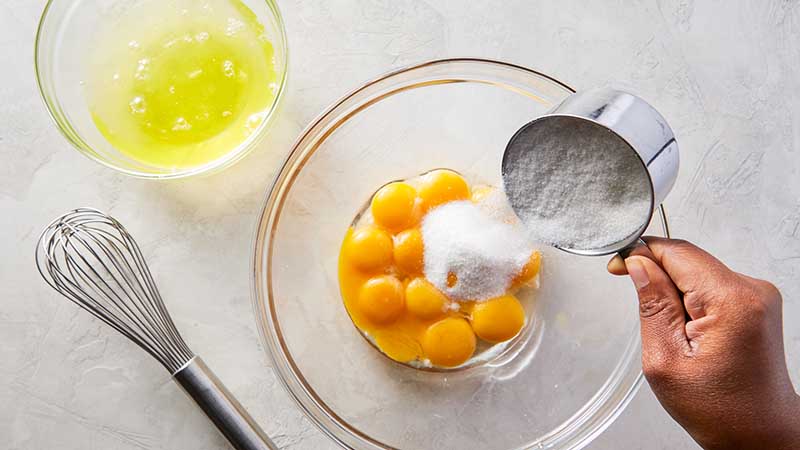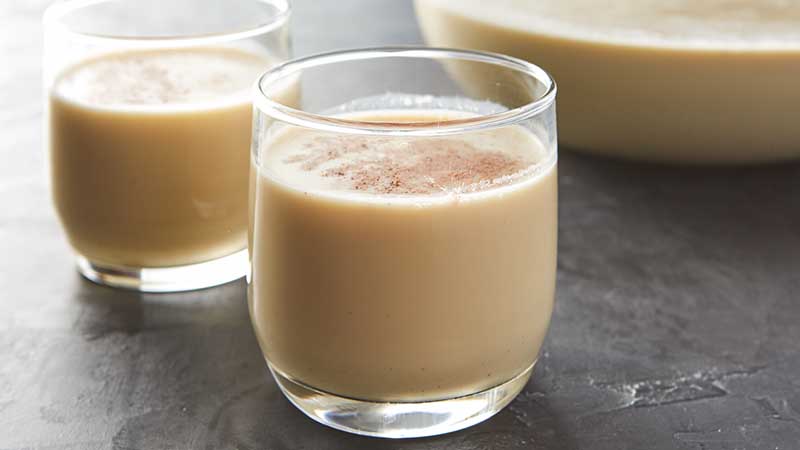(function() {
document.addEventListener('DOMContentLoaded', function() {
var componentMetadata = JSON.parse('\x7b\x22componentName\x22\x3a\x22ActionToolbar_d4f0b4cc-dd76-4537-857b-56997525ceb8\x22,\x22deferOptions\x22\x3a\x7b\x22deferComponent\x22\x3atrue,\x22deferType\x22\x3a\x22OnDemand\x22,\x22deferId\x22\x3a\x22r4e70183ff28f437cbaaf03326601376f\x22,\x22deferredContainerId\x22\x3a\x22\x2ffloatingActionToolbar\x2ffloatingActionToolbar_Interop\x22,\x22deferredContainerView\x22\x3a\x22InteropDeferWrapper\x22\x7d,\x22viewName\x22\x3a\x22ActionToolbar\x22\x7d');
var configuration = {"contentId":"2e0b7e6d-d4e3-4f14-8fea-59678fccf977","toolbarSettings":{"id":"d4f0b4cc-dd76-4537-857b-56997525ceb8","regAction":"FAVORITE","eSourceCode":16797,"namePassedToEvents":"ArticleStandardLongFormToolbar","buttons":[{"providerName":"pinterest","providerNamePassedToEvents":"Pinterest","shareUrlFormat":"//pinterest.com/pin/create/link/?url={0}","id":"76def9a1-42e6-4e8d-b963-2bb41556cef1","allowedForAnonymousUsers":true,"type":"Social","displayName":"Pinterest","toggleDisplayName":"","namePassedToEvents":"Pinterest","cssClassName":"atButtonPinterest","privacyOptOutMessage":"\u003cdiv class=\u0027privacyMessage\u0027\u003e\n\u003ch3\u003eThis feature is not available with your current cookie settings.\u003c/h3\u003e\n\u003cp\u003eYou can \u003ca href=\u0027#\u0027 data-show-preference-center=\u00271\u0027\u003eupdate your privacy settings\u003c/a\u003e to enable this content. Please enable “Functional Cookies” to use this feature.\u003c/p\u003e\n\u003c/div\u003e","showPrivacyOptOutMessage":false},{"addFavoriteErrorMessage":"Sorry, something went wrong. Please save again.","removeFavoriteErrorMessage":"Error occurred while removing from favorites","regAction":"FAVORITE","eSourceCode":16797,"isCurrentUserAnonymous":false,"isFavoriteItem":false,"id":"718b4e01-b2be-40cf-8f0c-bca3b01db0ed","allowedForAnonymousUsers":false,"type":"Favorite","displayName":"Save","toggleDisplayName":"Saved","namePassedToEvents":"Favorite","cssClassName":"atButtonFavorite","privacyOptOutMessage":"\u003cdiv class=\u0027privacyMessage\u0027\u003e\n\u003ch3\u003eThis feature is not available with your current cookie settings.\u003c/h3\u003e\n\u003cp\u003eYou can \u003ca href=\u0027#\u0027 data-show-preference-center=\u00271\u0027\u003eupdate your privacy settings\u003c/a\u003e to enable this content. Please enable “Functional Cookies” to use this feature.\u003c/p\u003e\n\u003c/div\u003e","showPrivacyOptOutMessage":false},{"providerName":"facebook","providerNamePassedToEvents":"Facebook","shareUrlFormat":"//facebook.com/sharer/sharer.php?u={0}","id":"efdb520e-282a-4ae1-8a04-1d444442d622","allowedForAnonymousUsers":true,"type":"Social","displayName":"Facebook","toggleDisplayName":"","namePassedToEvents":"Facebook","cssClassName":"atButtonFacebook","privacyOptOutMessage":"\u003cdiv class=\u0027privacyMessage\u0027\u003e\n\u003ch3\u003eThis feature is not available with your current cookie settings.\u003c/h3\u003e\n\u003cp\u003eYou can \u003ca href=\u0027#\u0027 data-show-preference-center=\u00271\u0027\u003eupdate your privacy settings\u003c/a\u003e to enable this content. Please enable “Functional Cookies” to use this feature.\u003c/p\u003e\n\u003c/div\u003e","showPrivacyOptOutMessage":false},{"templateId":"ec5776a6-84cf-4f91-ba79-ace5d6ae2fa2","dialogHeading":"Email Article","emailCode":"TBSP_ContentEmail","dialogSettings":{"cancelButtonText":"Cancel","copyToSenderLabel":"Send a Copy to Myself","emailAddressesLabel":"* Email Address(es)","emailInstructionText":"Separate email addresses with commas","fromText":"From:","privacyPolicyText":"\u003cp\u003e\u0026copy;2025 General Mills, Inc. All Rights Reserved. This information will only be used to send an email to your friend(s) and will not be saved. Please read our \u003ca rel=\u0022noopener noreferrer\u0022 rel=\u0022noopener noreferrer\u0022 href=\u0022http://www.generalmills.com/company/privacy-policies/privacy-policy-us\u0022 target=\u0022_blank\u0022 shape=\u0022rect\u0022\u003ePrivacy Policy\u003c/a\u003e.\u003c/p\u003e","requiredFieldText":"* Required","sendButtonText":"Send","senderEmailAddressLabel":"* Your Email Address","senderFirstNameLabel":"* Your First Name","sendToText":"Send To:"},"id":"1b476610-b2bd-4a56-ba87-47a4798f6dcb","allowedForAnonymousUsers":true,"type":"Email","displayName":"Email","toggleDisplayName":"","namePassedToEvents":"Email","cssClassName":"atButtonEmail","privacyOptOutMessage":"\u003cdiv class=\u0027privacyMessage\u0027\u003e\n\u003ch3\u003eThis feature is not available with your current cookie settings.\u003c/h3\u003e\n\u003cp\u003eYou can \u003ca href=\u0027#\u0027 data-show-preference-center=\u00271\u0027\u003eupdate your privacy settings\u003c/a\u003e to enable this content. Please enable “Functional Cookies” to use this feature.\u003c/p\u003e\n\u003c/div\u003e","showPrivacyOptOutMessage":false},{"layoutParameter":"p%3d1","id":"ab4bf4fc-919a-4252-81ca-c39edb8eadf0","allowedForAnonymousUsers":true,"type":"Print","displayName":"Print","toggleDisplayName":"","namePassedToEvents":"Print","cssClassName":"atButtonPrint","privacyOptOutMessage":"\u003cdiv class=\u0027privacyMessage\u0027\u003e\n\u003ch3\u003eThis feature is not available with your current cookie settings.\u003c/h3\u003e\n\u003cp\u003eYou can \u003ca href=\u0027#\u0027 data-show-preference-center=\u00271\u0027\u003eupdate your privacy settings\u003c/a\u003e to enable this content. Please enable “Functional Cookies” to use this feature.\u003c/p\u003e\n\u003c/div\u003e","showPrivacyOptOutMessage":false}],"isSticky":true},"userSettings":{"isCurrentUserAnonymous":true,"isFavoriteItem":false,"isAnonymousUserWithFavorites":false},"pageAttributes":{"url":"https%3a%2f%2fwww.tablespoon.com%2fmeals%2fdrinks%2fhow-to-make-eggnog","contentId":"2e0b7e6d-d4e3-4f14-8fea-59678fccf977"},"recaptchaPublicKey":"6LfW_icUAAAAAL_CG700pddUxLNYIxgRJe3vOg2Z"};
var moduleName = 'actionToolbar';
var isVueModule = true;
GeneralMills.PandoSites.RegisterControlInstance(moduleName, configuration, componentMetadata, isVueModule)
});
})();
How to Make Eggnog
Making eggnog at home may seem intimidating at first, but it’s actually quite easy to make. With the right technique and knowledge, you can learn how to make eggnog that’s even better than the generic store-bought product. This big-batch recipe can serve a crowd, but you can also make it for yourself and store for the entire holiday season!
To show you how to make a classic eggnog recipe, we’ll start with this easy eggnog technique that only requires a few steps. While this recipe suggests that you allow your eggnog a few weeks to age, it isn’t a necessary step and you can serve your eggnog as soon as it’s ready. However, we do recommend giving eggnog at least a week or two to age; although it’s an additional step and requires some patience, the flavors will have time to meld together, resulting in velvety, rich eggnog.
Tools Needed to Make Eggnog
- Large mixing bowl
- Whisk
- Bottle or sealed container
Ingredients Needed to Make Eggnog
- 12 eggs
- 2 cups granulated sugar
- 1 cup heavy cream
- 1 quart (4 cups) whole milk
- 1 liter (about 4 cups) bourbon, like Maker’s Mark™ Kentucky Straight Bourbon Whiskey
- ½ cups Myers’™ Original Dark Rum
- 1 pinch Kosher salt
- 1 nutmeg
Step 1: Separate egg yolks and whites (reserve the whites for another use, such as serving this eggnog). Combine yolks and sugar in a large mixing bowl and whisk until well blended and creamy.

Step 2: Add cream, milk, bourbon, rum, Cognac and salt, and then stir.
Step 3: Bottle it right away and refrigerate until it’s ready. Again, you’re more than welcome to serve the eggnog right away, but storing it in the fridge for a few weeks is well worth the wait.
Step 4: It’s traditional to wrap the bottle in aluminum foil, shiny side out, together with a fresh nut of nutmeg tucked into the foil for grating later. Keep refrigerated for at least three weeks or up to a year if you can.
Step 5: Serve aged eggnog on the rocks with some freshly grated nutmeg on top. If you want to serve the eggnog in the traditional way, pour it into a punch bowl. In separate bowls, whip 10 egg whites and 1 ½ cups heavy cream to soft peaks and fold them into the eggnog. Serve in punch cups, garnished with freshly grated nutmeg.

How to Make Eggnog with Alcohol
Traditionally, eggnog is an alcoholic beverage that is made with liquor like bourbon, cognac or rum. While adding flavor and an extra boozy oomph, the alcohol also serves as a preservative and sterilizer which is why you can store your eggnog for so long! And since most bacteria is unable to survive in alcohol, you can enjoy this festive sipper any time, even months later!
To make spiked eggnog, your first step is to choose quality liquor; for this eggnog recipe, you’ll need whiskey, dark rum and a good cognac. After you mix together the egg yolks and sugar, you’ll add the whiskey, rum and cognac to the mixing bowl. Stir all of the ingredients together and then store in a bottle or carafe and place in the refrigerator for at least a day.
How to Store Eggnog
If you somehow find yourself with leftover eggnog, don’t worry! The creamy concoction can be saved for later—you’d be surprised at how much later! If you’re wondering how long eggnog can last, the answer depends on how you store it and which ingredients you choose to add to your eggnog. The length of storage time is entirely dependent on how much alcohol you add. If you add more alcohol, you can store eggnog for longer. If you choose to make non-alcoholic eggnog, it will only last in the fridge for a day or two.
While a punch bowl is the preferred vessel for serving at a party, we recommend that you store it in a sealed container in the refrigerator to allow it to age. You don’t have to go through the aging process however; you can drink it right away, but true classic eggnog should sit because it results in richer flavor and texture. Even if you can put the mix in the fridge for an hour, it’s worth it. You can store eggnog for weeks or even months at a time. As it ages, the flavors will blend more and the texture will become thicker and creamier over time.
If you notice that your eggnog is liquor forward after storage or too thick, just add a touch of extra cream or milk before serving. Do this until you reach your desired consistency.
And although it’s totally safe to drink, it’s still worth mentioning that consuming raw or undercooked ingredients does present an increased risk in food borne illnesses. If the idea of raw eggs is still not your cup of tea (or cup of eggnog in this case), you can opt to cook the eggs first. By heating milk, cream and eggs together first to create a custard-like concoction that is later diluted with more cream, milk and liquor, you can make an equally delicious drink that everyone will still enjoy.
What is Eggnog
Now that you know how to make it, you may find yourself wondering what exactly is eggnog? What is the history of eggnog? Where it come from and why do we drink it during the holidays? Another name for eggnog is milk punch or egg milk punch. It is believed to have originated in the United Kingdom from a drink called posset. Posset was a British medieval drink made by curdling hot milk in wine or ale before it was mixed with spices. It was actually used as a cold remedy back then!
Eggnog was also once a popular drink with British aristocracy and used to toast to good health and prosperity. It was during the 18th century that the drink spread to the British colonies where rum was introduced to the mixture, because it was a cheaper alternative to brandy or wine. And because eggs and dairy were also readily available at that time, eggnog became an increasingly popular drink. Eventually the American Revolutionary War happened and rum became hard to come by, so it was replaced with more readily available liquors like whiskey and bourbon.
Later during the 1700s, eggnog became a popular holiday drink in the United States, a tradition that is still followed to this day. You’d be hard pressed to not see eggnog flavors popping up in grocery store products and in desserts all Christmas season long! Here are a few of our favorite eggnog-flavored recipes:
The holiday season is long. Find more party-ready beverages to serve.